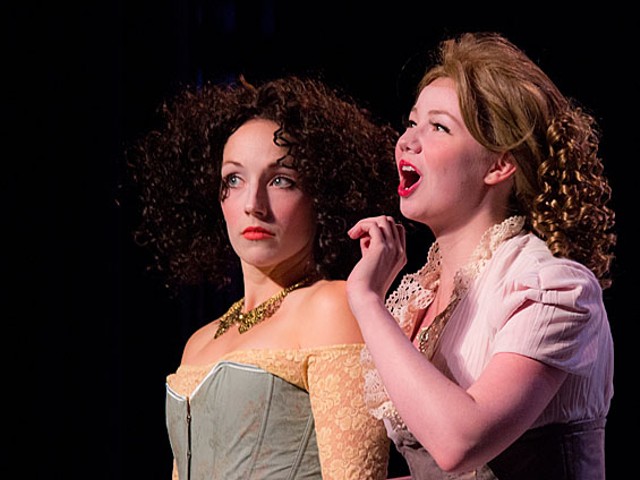The current offering at the Repertory Theatre of St. Louis, Fly, is a skillfully staged exercise in professional polish and precision. This account of America's first black pilots and their triumph over racial segregation during World War II employs a cunning integration of lighting, sound effects and music. The 90-minute, intermissionless work is highlighted by exciting aerial sequences during which rear-screen projection designs send the audience soaring into the sky.
But when the action was earthbound, my mind drifted to a much older play about adversity. Dore Schary's 1958 drama, Sunrise at Campobello, tells the story of Franklin D. Roosevelt's struggle with polio. When Sunrise won the Tony Award for Best Play, someone asked a Tony voter, "Did you really like that show?" "Not so much," the voter hedged, "but I liked FDR."
Surely we all can agree that the Tuskegee Airmen (the play's four characters stand in for the nearly 1,000 pilots who trained in the 1940s in Tuskegee, Alabama, thus giving them the sobriquet) deserve our gratitude and respect. Any attempt to honor the young fliers who confronted prejudice both at home and in Europe is commendable. But because Fly is more allegorical, playwrights Trey Ellis and Ricardo Khan are not bound by the facts. By evening's end, we've actually learned precious little about the Airmen. Some of the more fanciful plot strands may succeed in eliciting knee-jerk laughter and tears, but there's more substance in the background article printed on the playbill than there is onstage.
Still another play comes to mind: Recall Mary Zimmerman's adaptation of Ovid's Metamorphoses that played the Rep ten years ago, complete with a large wading pool. Whenever Zimmerman's imagination ran dry, she put her actors into the pool. This presumably passed for theater, and everyone had a good time. Whenever the imagination flags in Fly, a metaphorical character named the "Tap Griot" pounds his way about the stage in loud tap-dancing routines. Fly might as well be subtitled "Savion Glover Joins the Air Force."
Although the show strives mightily to be different, we've already seen too much of this plot before — the petty internal bickering among the young airmen, the gruff flight instructor. (Fly sometimes feels as much like a tribute to old war movies like Twelve O'Clock High, Command Decision and A Guy Named Joe.) In this story about racial prejudice we hear one obligatory use of the "N" word — but only one, because more than one might actually elicit a raw emotional response from the viewer. Everything here is calculated for effect. While most plays and movies manipulate their audiences, it shouldn't be so transparent.
Let it be underscored that the Rep has given Fly a bang-up staging. The show looks great; the technical accomplishments often dazzle. The production arrives in St. Louis after several weeks in Cincinnati, so the seven-actor cast is honed to function as a smooth ensemble. Director Ricardo Khan keeps the action moving — literally. (Actors don't walk across the stage; they swivel and sway.)
That said, it should also be noted that on opening night, the moment the lights came up after a thundering ovation at the curtain call, various audience members were heard asking, "What's the score?"
"Nine to nothing in the sixth."
"The Cardinals are beating the Dodgers nine to nothing?!" asked another, followed by an incredulous, "That's what we missed while we were in here?"
And in a flash, Fly had already flown away.






